

High-priority BMPs for protecting nesting grassland birds in the Spring:
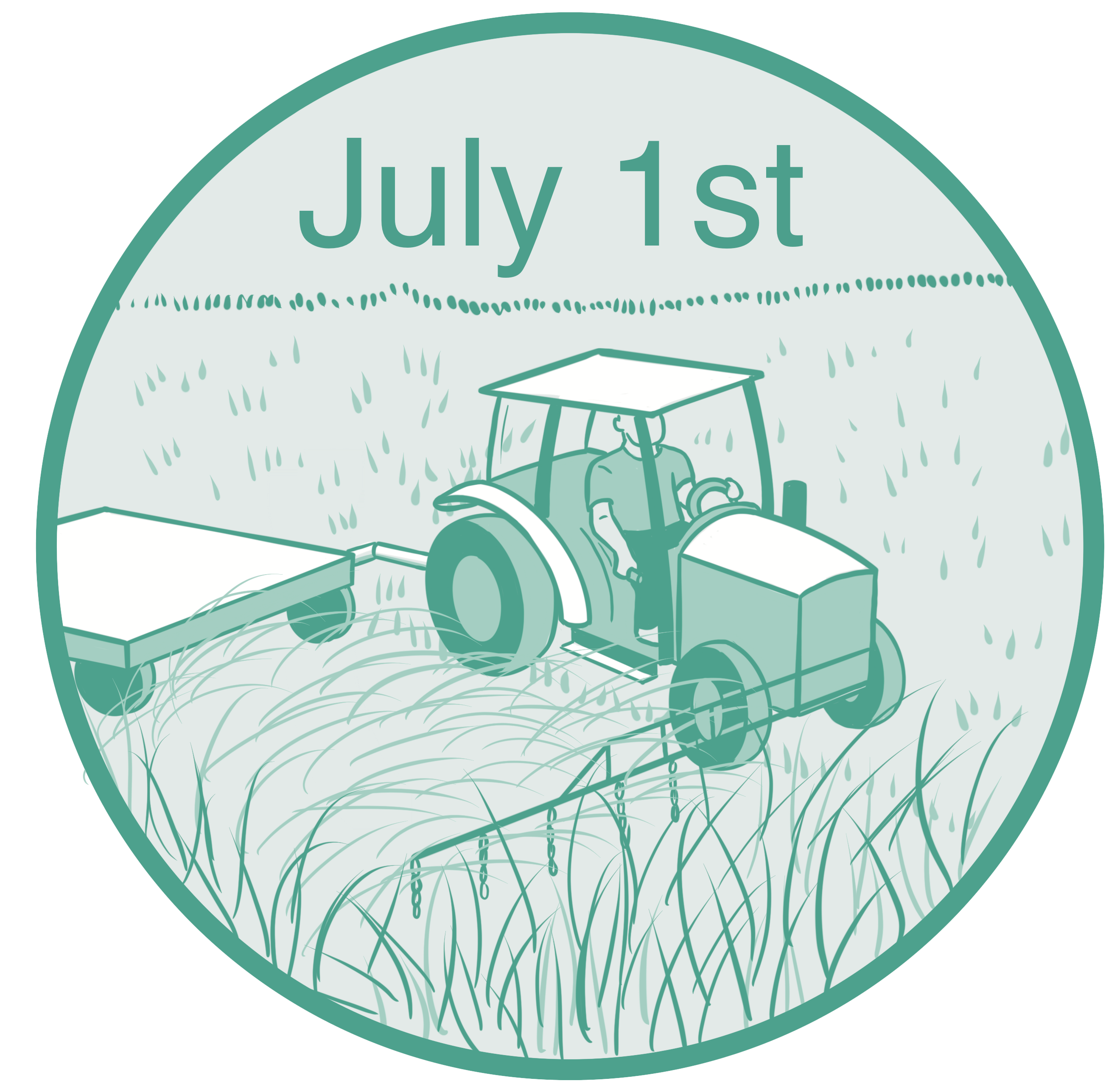
Delay your first cutting of hay
Local researchers have found that 80% of successful nests fledge by July 1st. Therefore, delaying the first spring hay cutting until July 1st in select fields can significantly boost nest success rates. The resulting higher-fiber, more mature hay produced in early July is suitable for many hay operations, including those that are producing forage for dry cows and retired animals, as well as for mushroom hay and bedding for animals. The land stays eligible for agricultural land use tax deferral. VGBI has a financial incentives program that pays farmers $35/acre to try out this practice and NRCS has a cost share program that can help fund this practice longer-term.
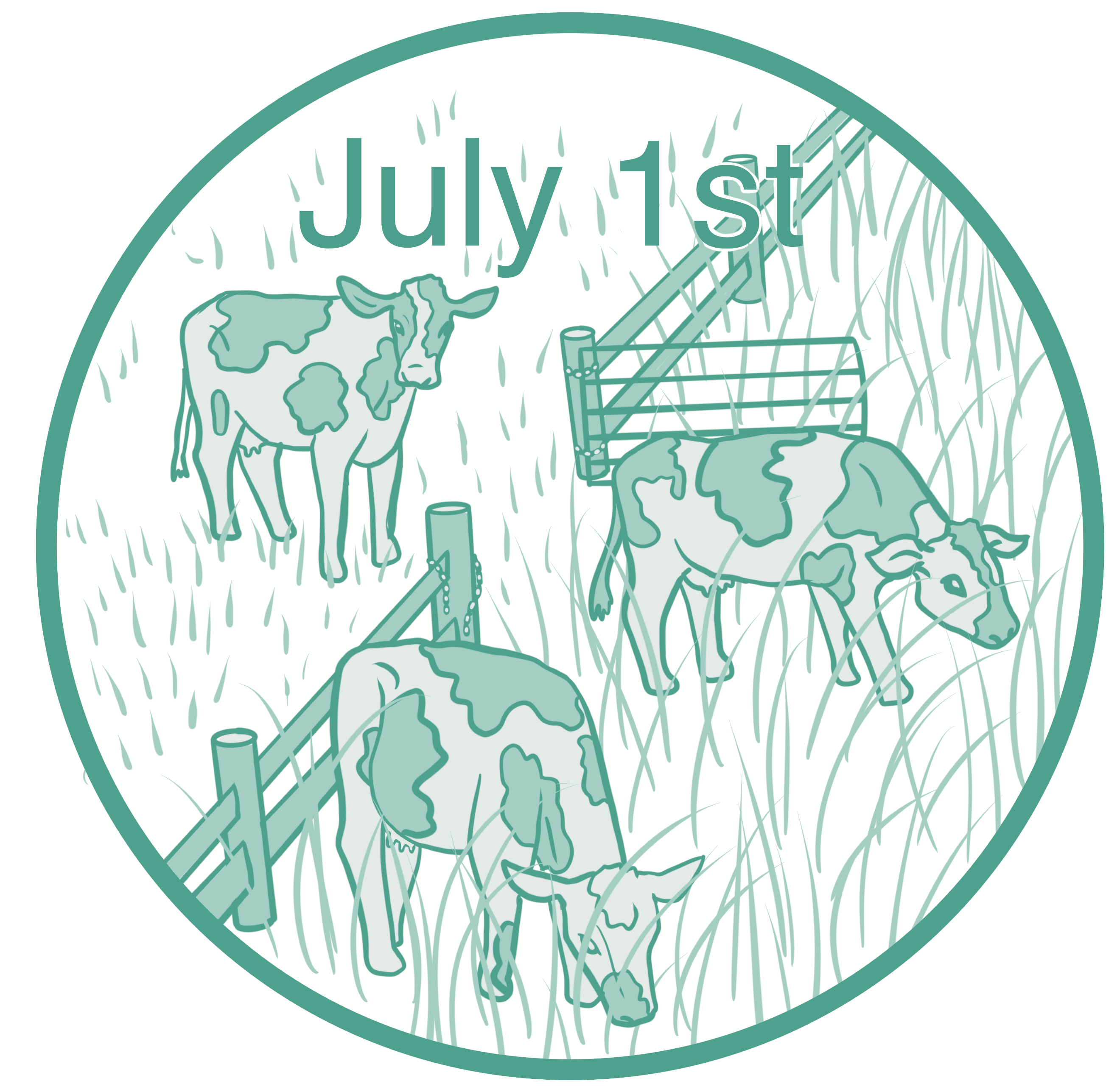
Summer pasture stockpiling
Local research has also shown that stockpiling forage in the Spring to be grazed in the Summer provides critical nesting habitat for grassland birds. Stockpiling bridges the summer dormancy gap by providing standing forage in late summer without the risk and cost of planting summer annuals. It also provides the opportunity to rest and prepare other fields for Fall/Winter stockpiling with the goal of reducing hay feeding days and annual feed cost. VGBI has a financial incentives program that pays farmers $35/acre to try out this practice and NRCS has a cost share program that can help fund this practice longer-term.
If you are already implementing either or both of these practices on your landscape, we want to know about it! Please take a few minutes to fill out this form so that we can better track the amount of local acreage that is suitable for grassland bird nesting.
Additional BMPs that benefit grassland birds year-round:
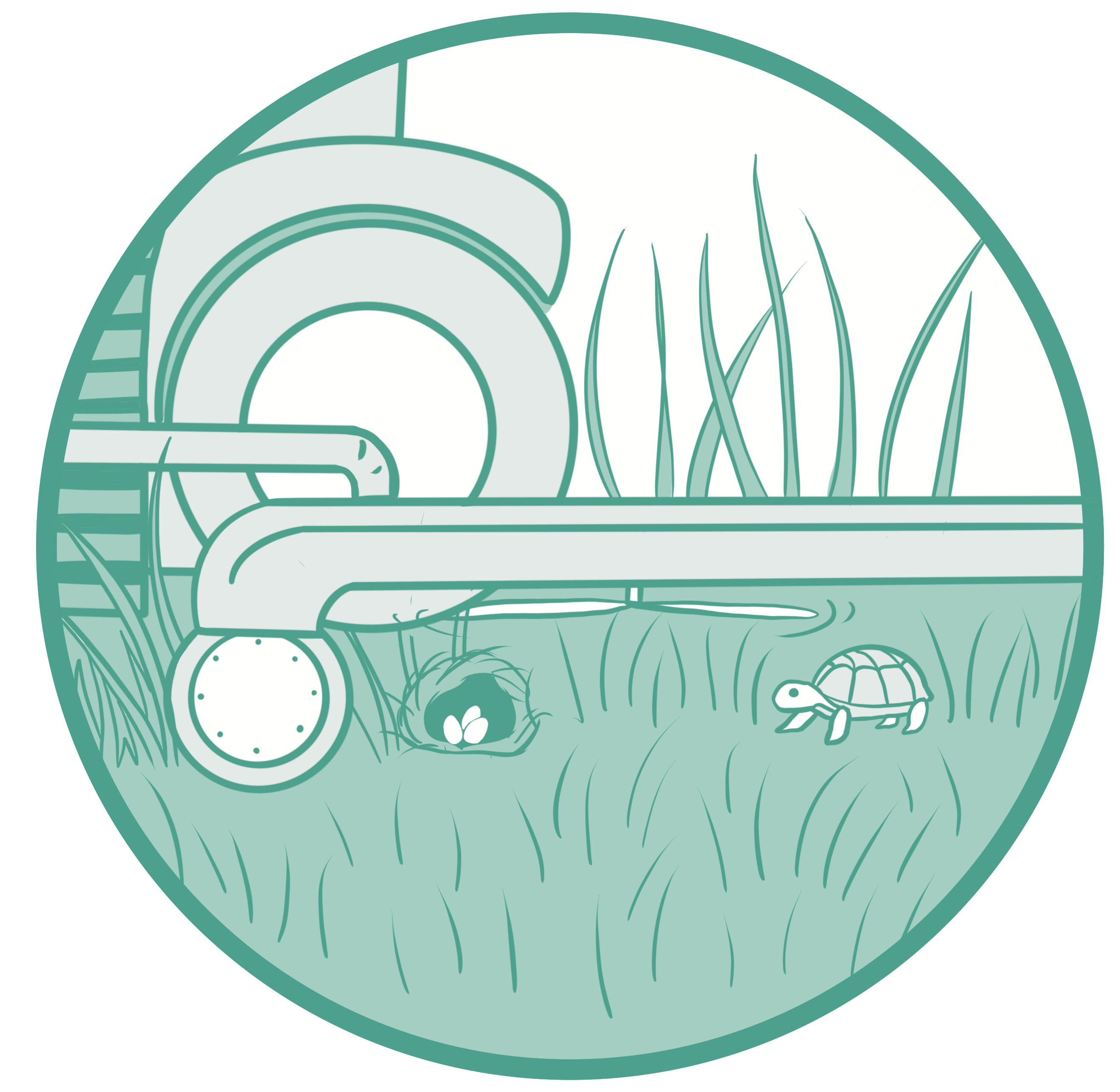
Raise your blades
Raise machinery cutting blades to 8 inches, or as high as possible, when cutting/clipping fields to avoid destroying grassland bird nests and injuring turtles. This practice is best intended for landowners and producers clipping livestock pastures or bush-hogging fields to maintain grassland habitat. See informational flyer about this BMP for more details.
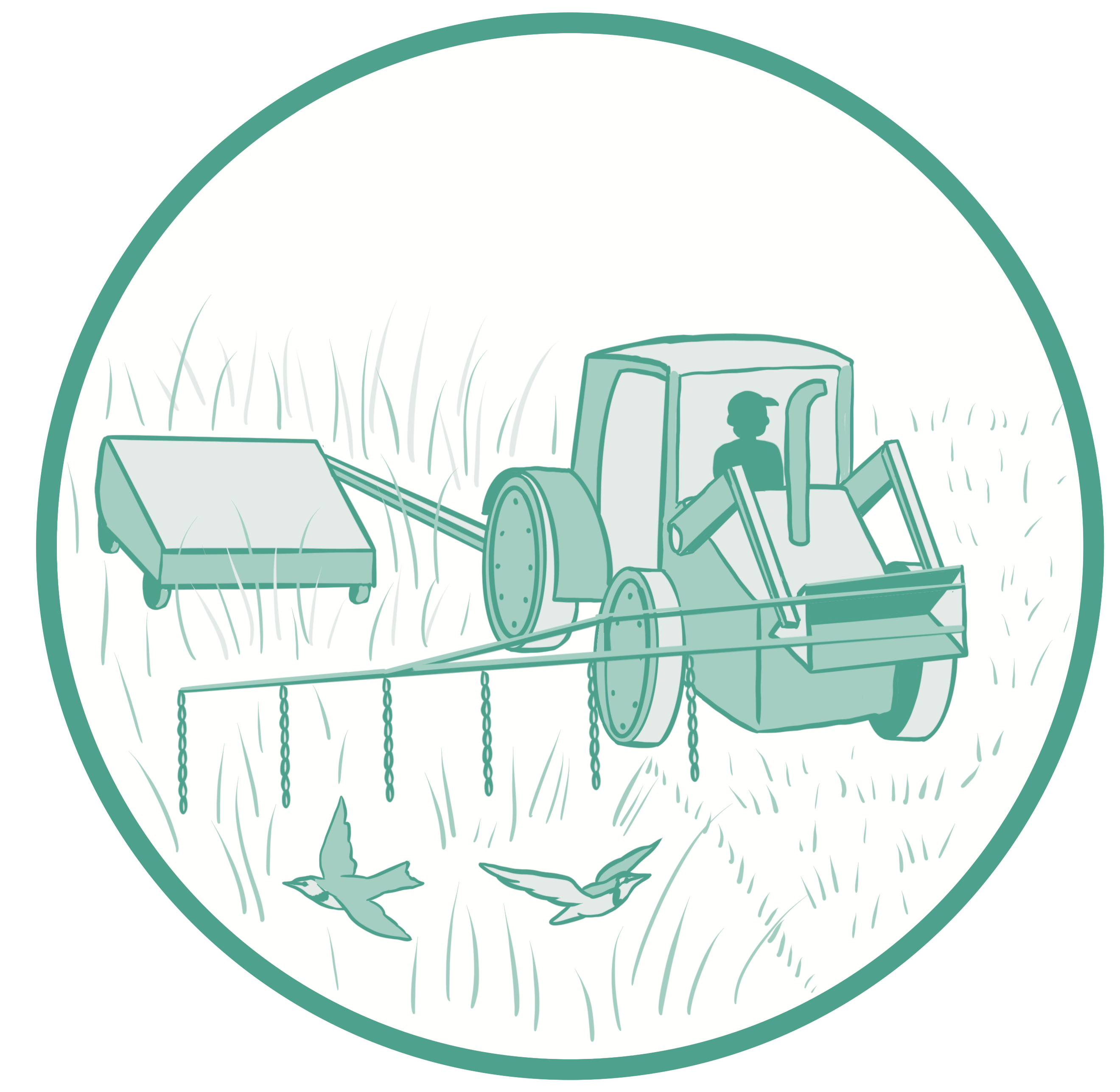
Add a flushing bar
Flushing bars (a horizontal bar with dangling chains) can be added to tractors if you hay/mow/clip during the nesting season to reduce adult and juvenile grassland bird mortality. These bars also flush fawns. See this informative video to see a flushing bar in action.
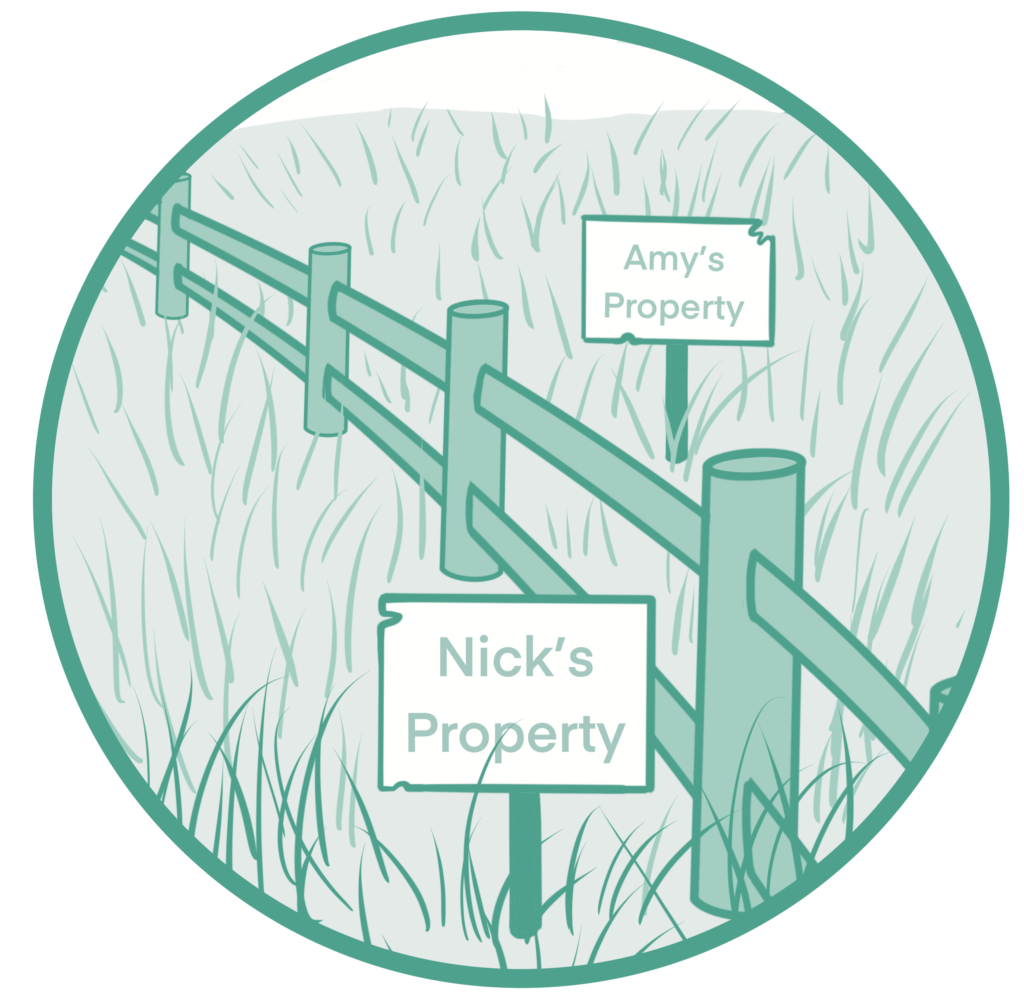
Work with neighbors on shared management
Some of the biggest conservation impact comes from working with neighbors to align management practices across property lines. Examples would include staggering mowing times of fields so that wildlife always have nearby food and refugia. Cooperative management builds out much larger tracts of functional habitat, while also fostering a greater sense of local community pride and stewardship.
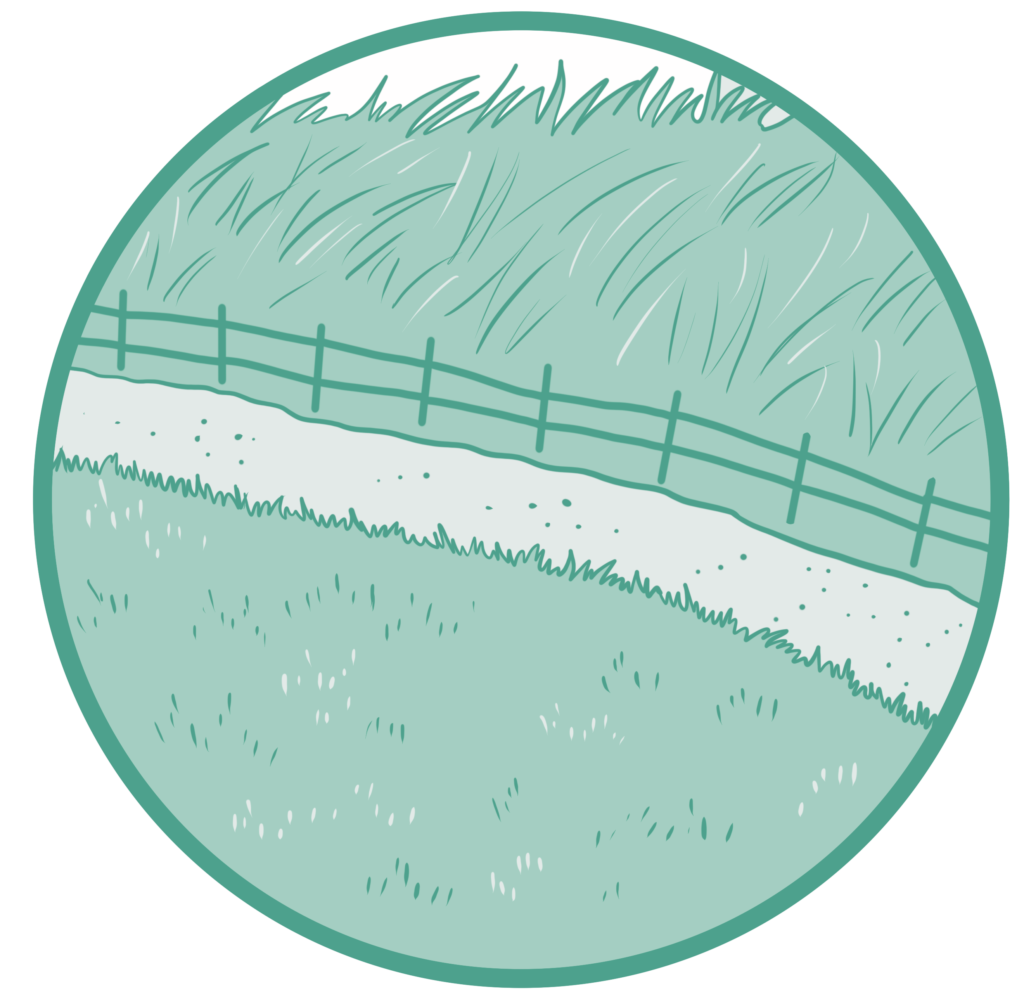
Set aside unmowed areas adjacent to mowed areas
This practice allows for grassland birds, pollinators, and other grassland wildlife to still have habitat available when mowing needs to occur. In the case of smaller landscapes, coordinate the staggering of mow dates with neighbors (see BMP above) to achieve the same impact.
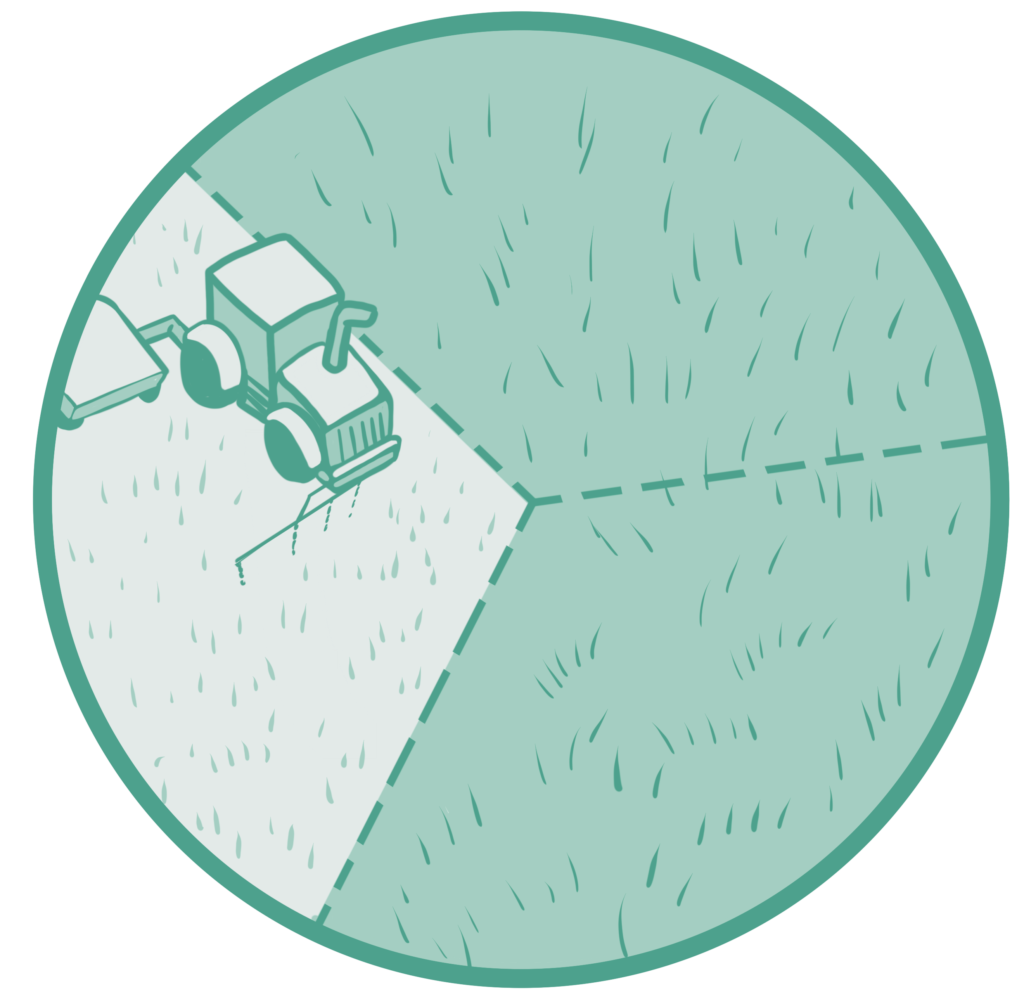
Manage fields in patches
Cutting/clipping/mowing/burning only sections of a field at a time create a more natural “disturbance”, creating wanted heterogeneity in plant structure while always leaving some available habitat on the landscape. It is common to divide fields into thirds and only manage one-third each year.
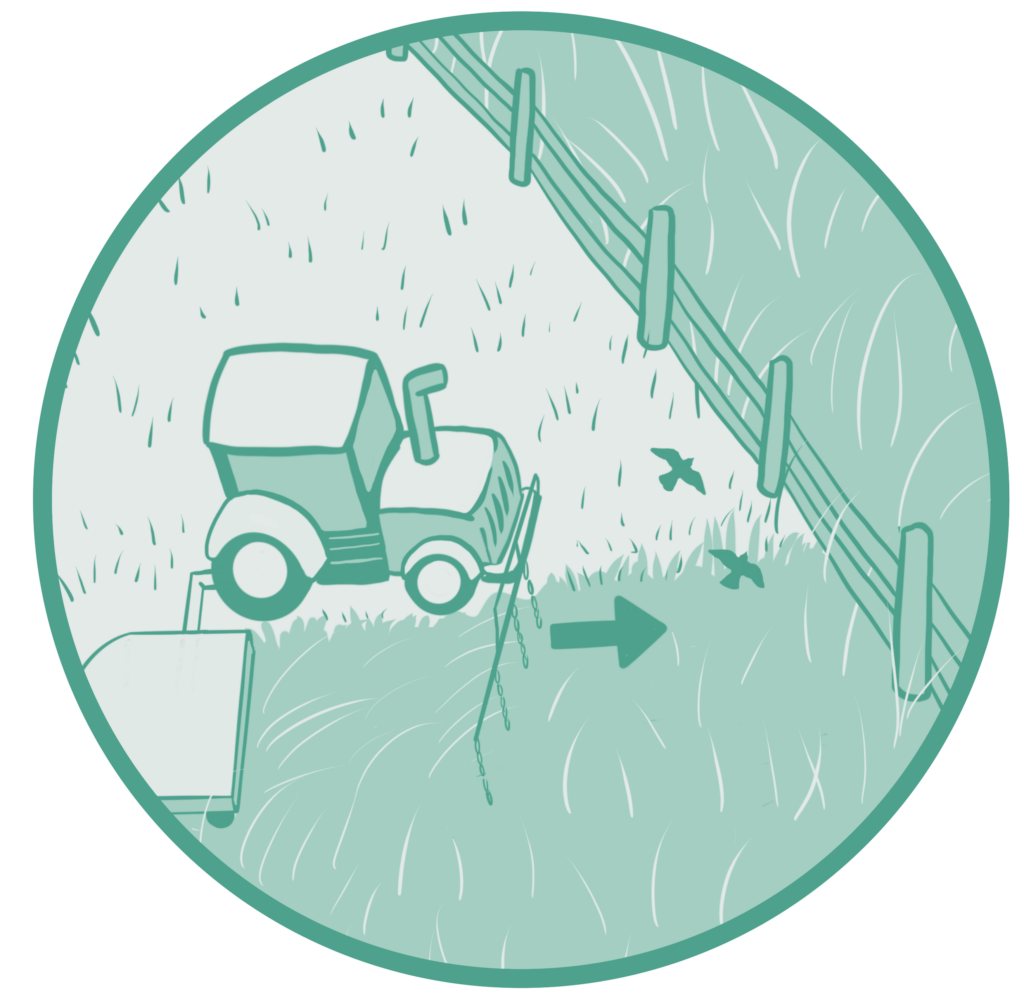
Mow towards refugia
When mowing, allocate unmowed areas that the wildlife you disturb can flee into, and mow towards those areas so as to flush wildlife into an area that provides cover and food.

Don’t mow at night
Wildlife using your fields is less capable of responding to disturbances at night, resulting in higher mortality. It’s best to manage fields (mowing, clipping, burning, etc.) during daylight hours.
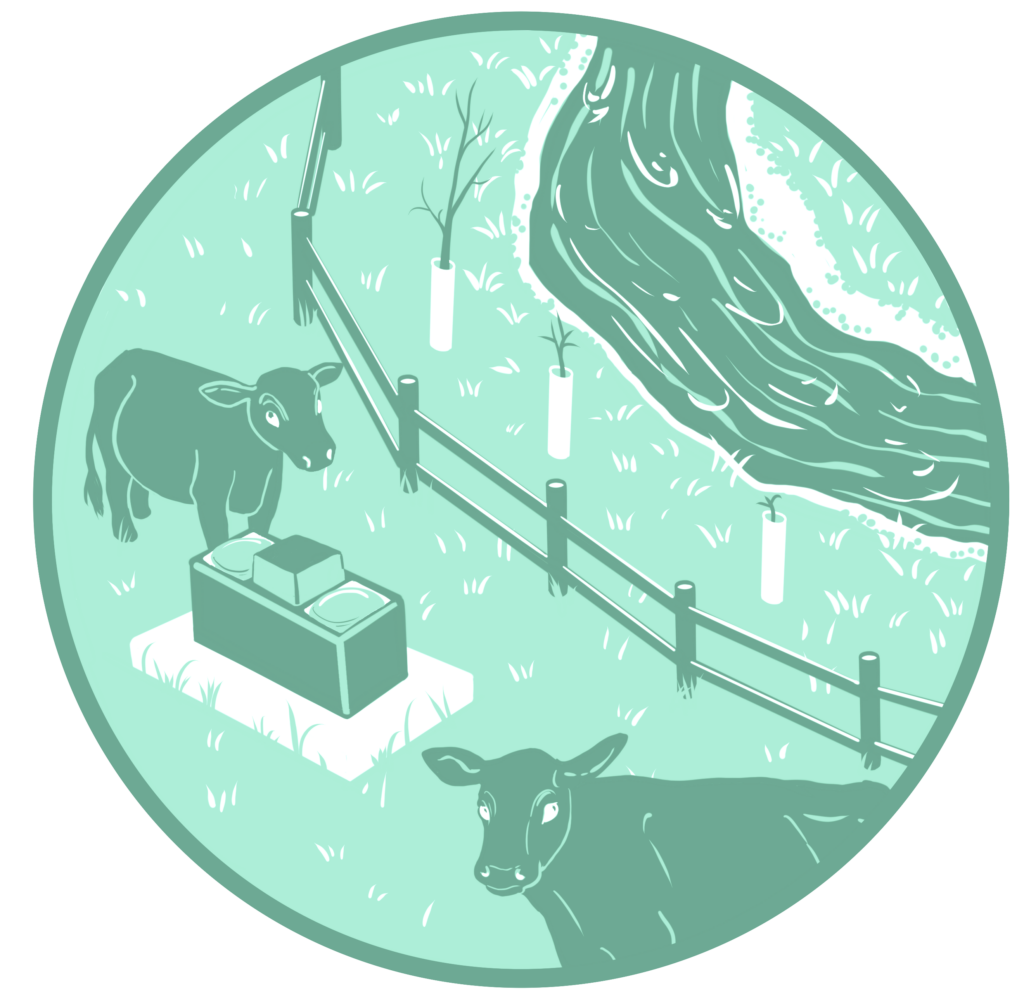
Stream exclusion and buffer plantings
Streams and rivers are critical ecosystems for wildlife, and the health of those waterways is deeply intertwined with the health of the adjacent landscape or farm. These waterways are a shared resource for entire communities, and so the collective goal is to implement BMPs that ensure the water leaving one’s property is cleaner than when it arrived. Removing livestock from a waterway and subsequently installing exclusion fencing and water troughs at key locations results in healthier livestock, more capacity for rotational grazing, and the opportunity to buffer that waterway with native grasses, shrubs, and trees. Those riparian buffers are unique habitats that produce food, shelter, and nesting structure for many bird species, and act as safe travel corridors across private lands for an even more diverse suite of wildlife.
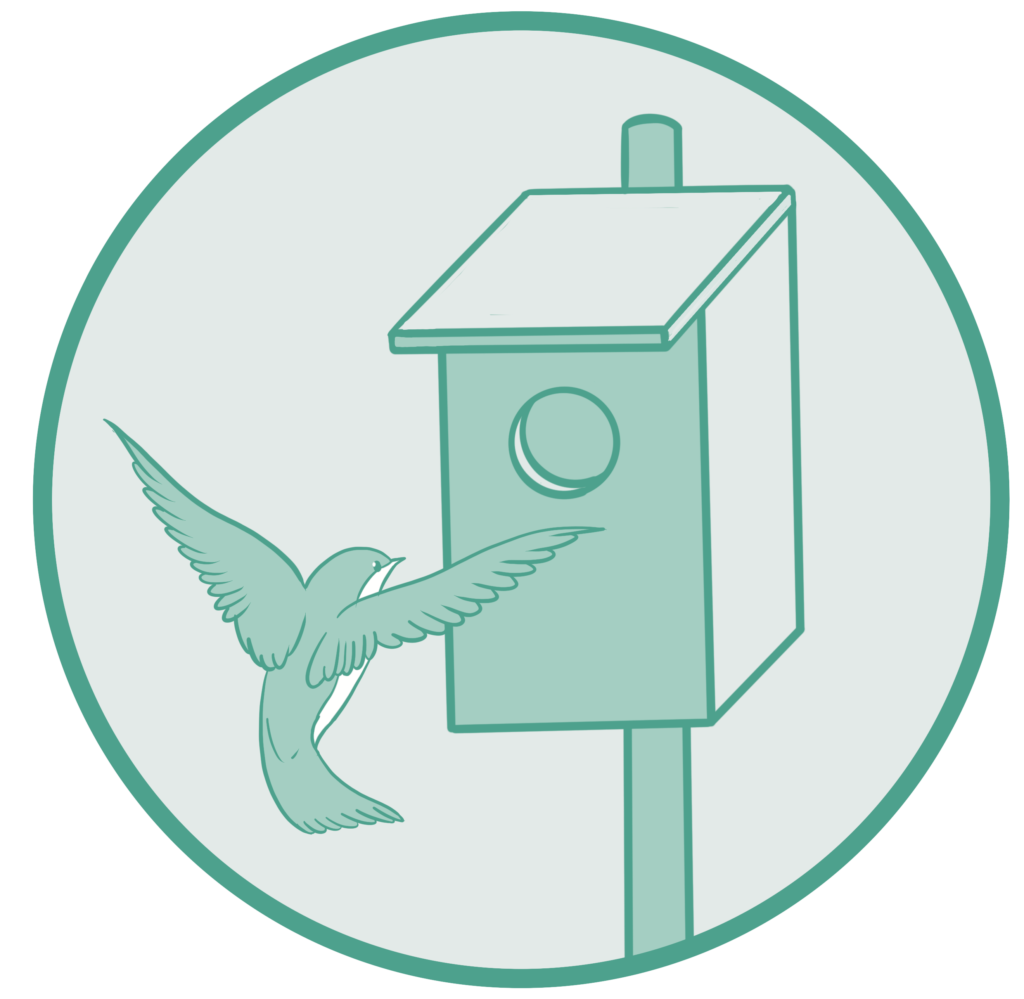
Install nest-boxes
Cavity-nesting birds are often cavity-limited. Most importantly, leave dead snags standing whenever they don’t pose a safety risk, as snags are targeted by woodpeckers that create cavities for other birds to use. Additionally, artificial nest-boxes can be added to your landscape to create safe nesting opportunities for dozens of species. Be sure to follow expert advice on how to properly build and install these nest-boxes so that their positive impact is optimized. See here for extensive information on building, installing, and monitoring nest-boxes for Virginia birds.

Provide overwintering habitat
We often focus on providing quality habitat during the nesting season, but winter is an equally important time to provide habitat and food. Time any Fall cuttings to allow for some plant regrowth before the dormant winter season sets in. Plant trees and shrubs that produce nuts, berries, and seeds later in the season that can provide food during the colder months.
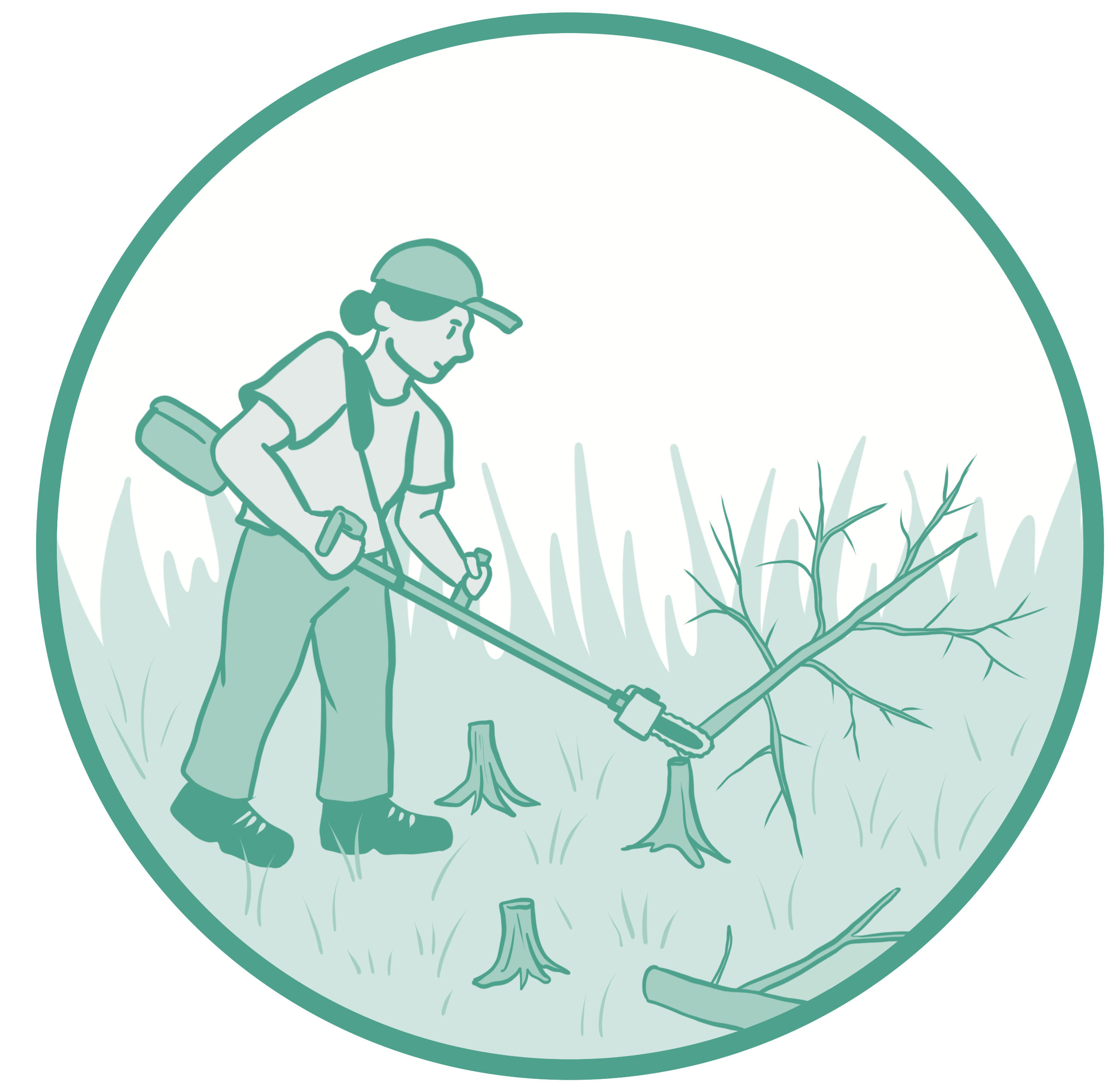
Remove non-native species
Invasive (non-native) species outcompete our native plants, removing critical food resources and habitat from our landscapes. There are many ways to combat non-natives, including mechanical and chemical removal, and sometimes using more aggressive native plants to overtake the non-natives. Assistance from technical service providers on developing a short- and long-term plan for the removal of invasives from you landscape is highly encouraged.

Plant native warm season grasses (NWSGs) and wildflowers
NWSGs can be used for livestock forage, hay, or as a field or riparian buffer. These grasses are deep-rooted, resulting in higher drought resistance, more carbon sequestered deeper into the ground, and more organic material added into the soil. Meanwhile, native wildflowers should be integrated into any available habitats, including working fields, buffers, riparian areas, etc. to provide critical resources for pollinators wherever possible.

Keep all cats indoors
Free-roaming cats are one of the most significant threats to wildlife, killing millions of bird in the United States every year. This is easily preventable – no cat should freely roam the landscape. This includes house cats and barn cats. Barn cats are not an effective tool for rodent control on farms. Instead, build back a diverse ecosystem that will attract birds of prey to your landscape, especially owls, that can effectively keep small rodent populations in check. Read more on cats from the American Bird Conservancy on how to mitigate these problems.

Eliminate the use of pesticides, including insecticides and rodenticides
There are very few, if any, pesticides that solely target a single species without causing wider-spread damage. Note that birds rely heavily on insects for their diet, especially when raising young, and so killing or poisoning insects negatively impacts birds. And keep in mind that bait blocks (poisons targeting mice and rats) should never be used – not in or around your home, or outside around a barn. These weaken small mammals that then become easy prey for hawks, owls, and falcons, resulting in the poisoning of our birds of prey.
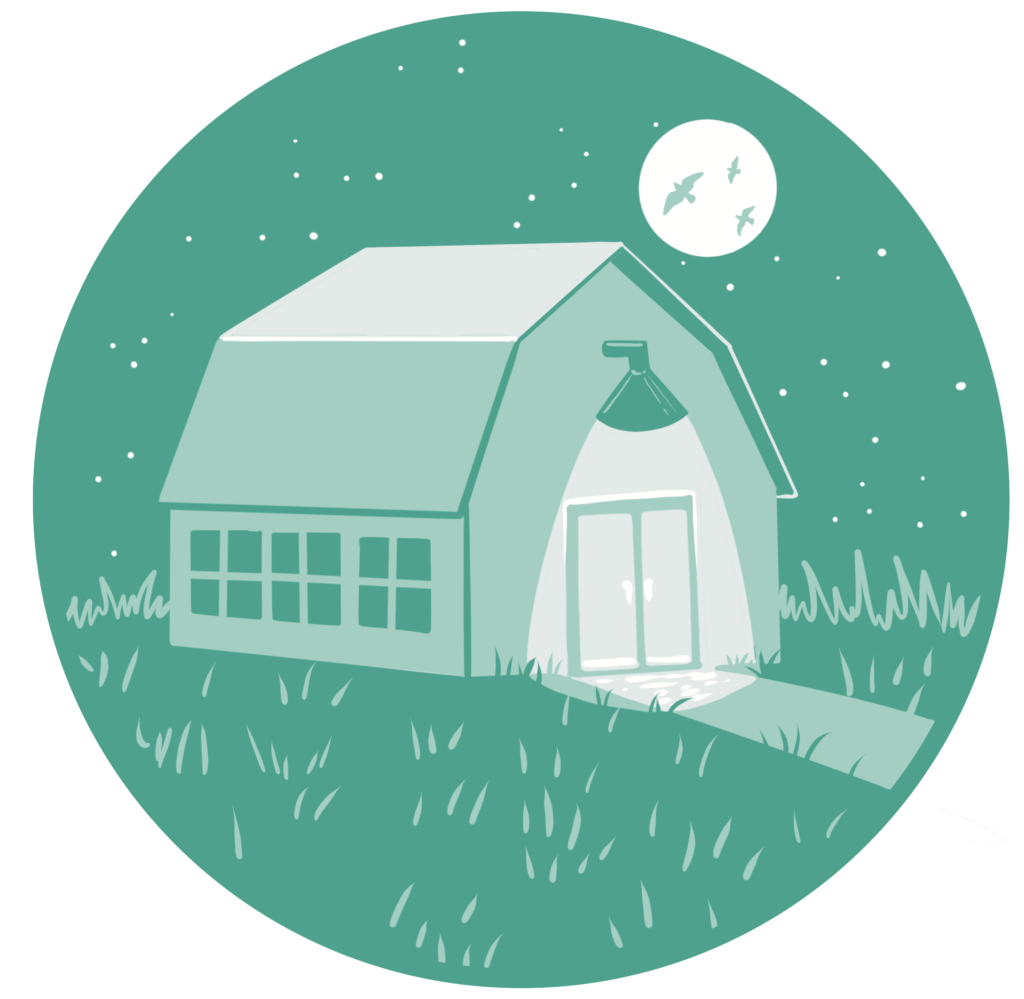
Upgrade ALL outdoor lighting to be Dark Sky compliant
All outdoor lighting, whether around the home, barn, or roadside, should be down-shielded. This actually increases the amount of light down low where it is needed, while reducing (ideally eliminating) light that is unnecessarily cast upwards. Doing so preserves the darkness of our night skies, a benefit to everyone from star-gazers to migrating birds. For additional impact, switch “white” lights out for amber lights, which further reduces light pollution while also protects our beneficial native insects.

Transition to non-lead ammunition
Lead ammunition often fragments/shatters inside of a carcass and is toxic to both humans and wildlife, setting the stage for unknowing consumption and poisoning. Non-lead ammunition (copper and copper alloys) is now readily available and as effective as or more effective than lead bullets. The ballistics of copper bullets are nearly identical to lead bullets but, unlike lead, they leave no residue behind, reducing wear on the gun itself. Many major ammunition manufacturers now offer non-lead alternatives for most commonly used hunting calibers. Additionally, the cost for non-lead ammunition is dropping as demand increases. Read more on non-lead ammunition from the American Bird Conservancy.
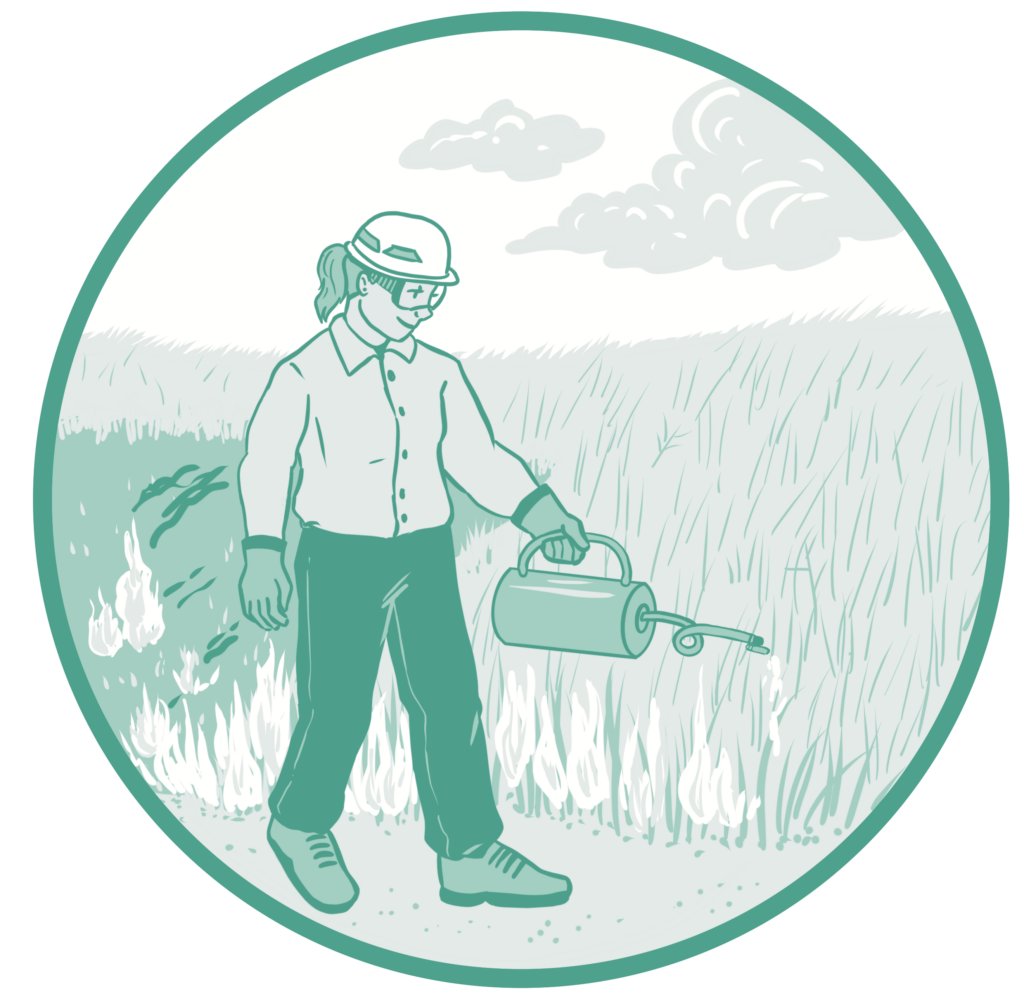
Prescribed fire
While once a natural, widespread, and necessary disturbance, small-scale fires on our landscapes have been largely suppressed, which has reduced the diversity of our plant communities. Prescribed (i.e., controlled) fires are an excellent management tool for restoring the health of our grassland and meadow ecosystems.
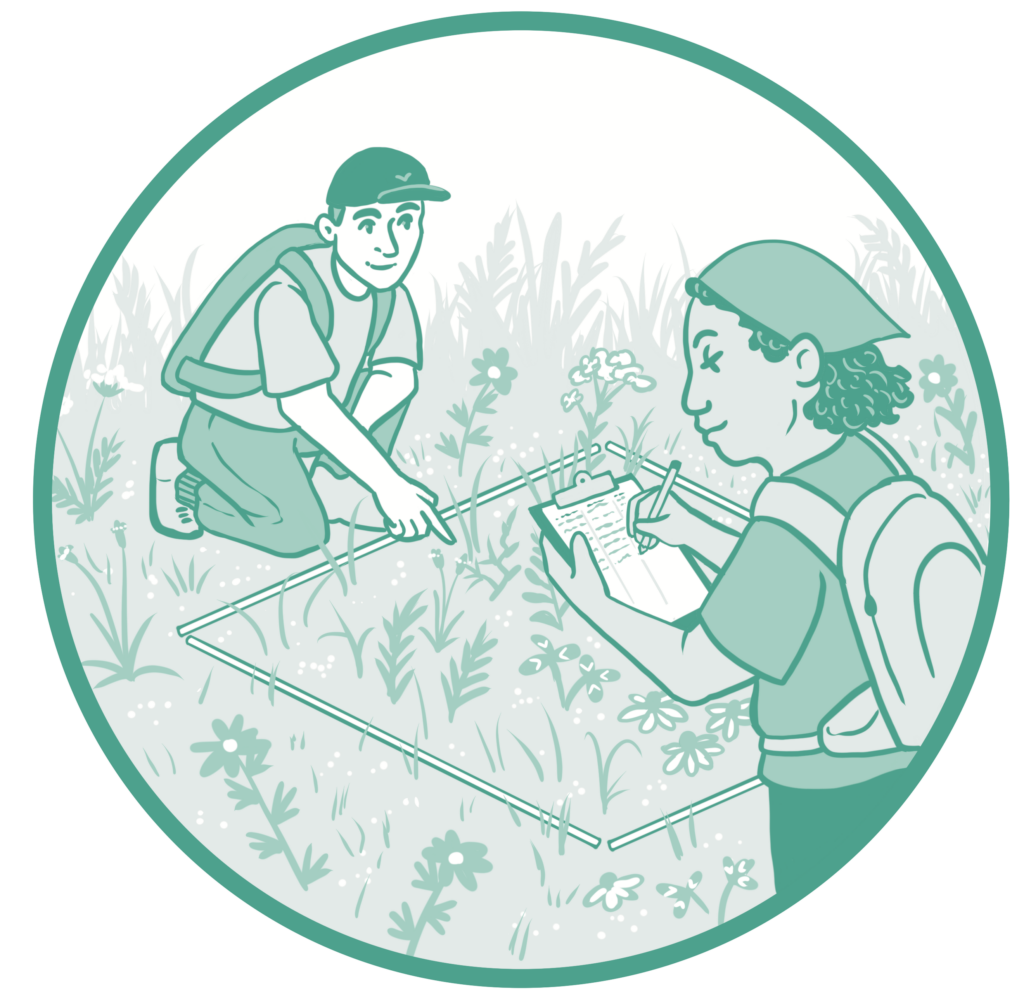
Volunteer as a community scientist
Volunteering with a local conservation organization is an excellent way to engage with nature in new ways, contribute to local research and outreach efforts, make new friends, share your own knowledge and skill sets, and help promote good land and water stewardship practices throughout your community.

Edge and Shrub Habitat
Diverse edges and patches of shrubs are some of the habitats that have seen the most decline, as landowners trend towards a “cleaner” aesthetic and as agriculture intensifies. The majority of wildlife we’re aiming to protect require transitional habitats between field and forest, and also benefit from shrubby “islands” and/or fencerows, which can be achieved by planting patches of native flowering shrubs in fields and/or around field edges, hinge-cutting select trees (i.e., edge feathering), and/or reducing management in those areas to allow native plants to grow and establish wherever possible.
All illustrations by Nick Garnhart
